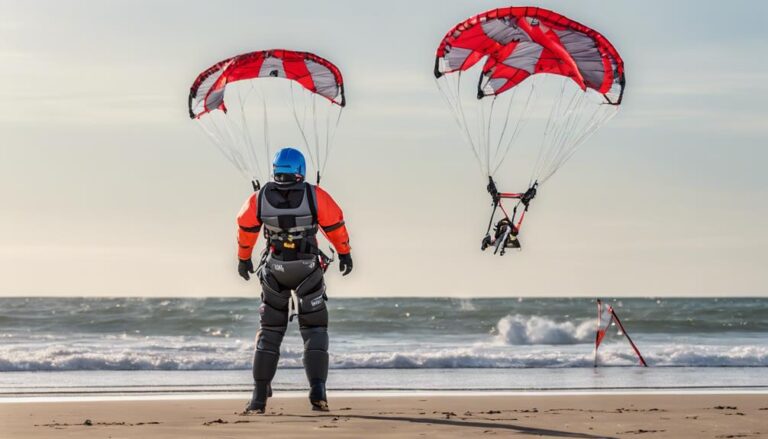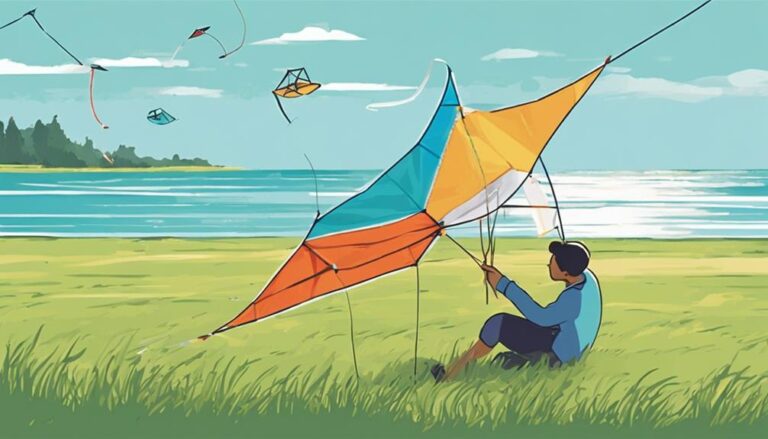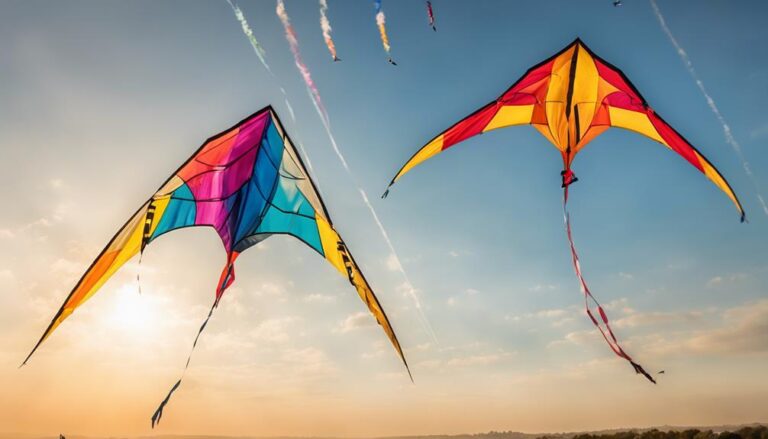Navigating the world of single-line kites can sometimes feel like deciphering an ancient code, but as you embark on your kite-flying journey, you’ll find it’s not as daunting as it seems.
You’re about to discover the top beginner-friendly models, such as the RC Raptor and Prism Ribbon Tail series, which offer the perfect blend of simplicity and enjoyment at a price that won’t break the bank. These kites are designed with you in mind, ensuring that anyone, regardless of age or skill level, can master the art of kite flying.
Stay with us as we unveil how to choose the right kite that will elevate your flying experience to new heights.
Contents
Understanding Single-Line Kites
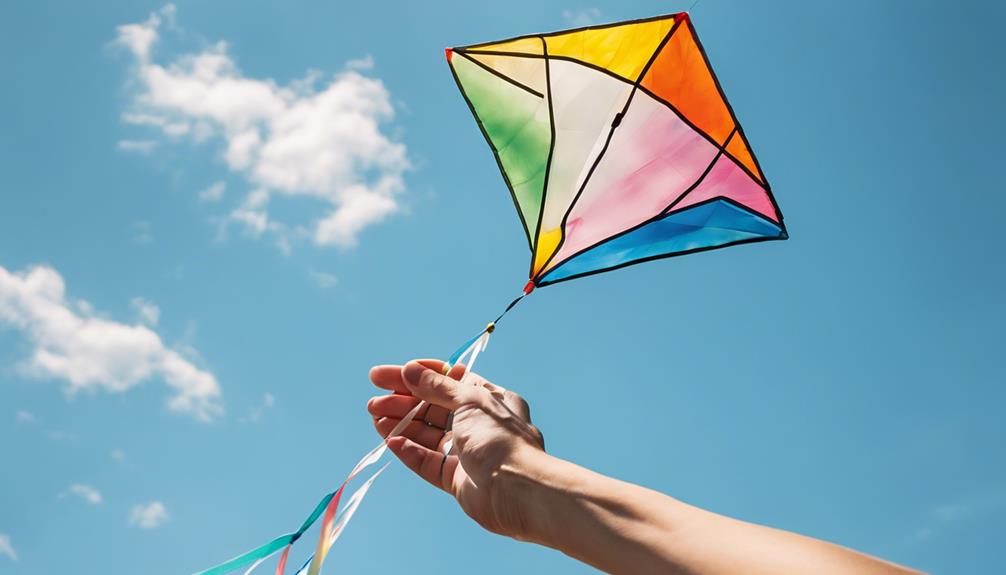
Single-line kites, with their one-string simplicity, offer an accessible and enjoyable entry point into the world of kite flying for enthusiasts of all ages. If you’re starting out, a single-line kite, often referred to as a beginner kite, is a perfect choice. Designed for easy flying, these kites require just one line to control, making them less complicated than their multi-line counterparts.
They’re crafted to catch the wind effortlessly, ensuring a satisfying flight with minimal effort. You’ll find them in a variety of shapes, sizes, styles, and colors, allowing you to choose one that best fits your personality or flying conditions. This variety ensures that every flyer, regardless of skill level, can enjoy the magic of kite flying.
With a single-line kite, you’re set for a straightforward, yet thoroughly engaging, introduction to this timeless activity.
Essentials of Kite Flying

As you embark on the journey of kite flying, selecting your first kite is crucial; models like the RC Raptor and Prism Ribbon Tail offer a friendly start for beginners.
Understanding wind conditions is key to a successful flight, as you’ll need to stand with your back to the wind to launch your kite effectively.
Grasping the basics of launch and control will ensure that your kite soars high and steady, providing endless fun and satisfaction.
Choosing Your First Kite
When choosing your first kite, you’ll find that single-line options offer simplicity and ease of control, making them an ideal starting point. These kites are perfect for beginners because they don’t require complex maneuvers to fly.
As you embark on this journey, consider both the size and design of the kite. It’s important to select one that resonates with your personal preferences and feels comfortable to handle. For an affordable introduction, the Prism 20ft Ribbon Tail is a budget-friendly choice that doesn’t compromise on the joy of kite flying.
Understanding Wind Conditions
After selecting your first kite, it’s crucial to understand that wind conditions significantly impact your flying experience, as they determine the kite’s lift and stability.
Knowing the Beaufort Wind Scale is essential for beginner flyers, as it helps you identify suitable wind conditions for your kite. Different kite designs and sizes thrive at specific wind speeds, but a moderate and consistent breeze between 5-15 mph is ideal for beginners.
This range offers enough force for lift without overwhelming control. Always check local weather forecasts before heading out, ensuring the conditions match your kite’s needs and your skill level.
Understanding these wind conditions is a foundational step in ensuring your kite-flying adventures are enjoyable and successful.
Launch and Control Basics
Launching your kite successfully requires understanding the basics of positioning yourself correctly against the wind and managing the kite line effectively. Proper wind conditions are crucial for lifting your kite. In low wind, a helper can give your kite the initial boost it needs or you can prop it up.
Letting out enough lines allows your kite to reach the desired altitude, ensuring a stable flight. Controlling a single-line kite is both simple and intuitive, offering a satisfying experience as you master the wind’s influence on your kite’s performance.
| Aspect | Importance |
|---|---|
| Wind Conditions | Essential for Lift |
| Helper/Prop | Assists in Low Wind |
| Line Length | Determines Altitude |
| Wind Understanding | Affects Performance |
| Line Control | Ensures Stable Flight |
Top Beginner-Friendly Models

For beginner flyers, selecting a single-line kite that’s easy to handle can significantly enhance your flying experience. Beginner-friendly single-line kites come in various shapes and sizes, ensuring there’s a perfect match for everyone. The joy of flying can start with something as simple as choosing the right kite.
Here are four top models designed with beginners in mind:
- RC Raptor at $49.99 – A popular choice for its ease of use.
- Prism 20ft Ribbon Tail in Infrared – Budget-friendly at $8.88, making it accessible.
- Widow Pro Classic Ultralight in Patriotic Star design, priced at $178.00 for those seeking quality.
- Beginner-friendly models are easy to fly, and perfect for anyone new to the hobby.
These selections promise a smooth and enjoyable introduction to kite flying.
Features to Look For
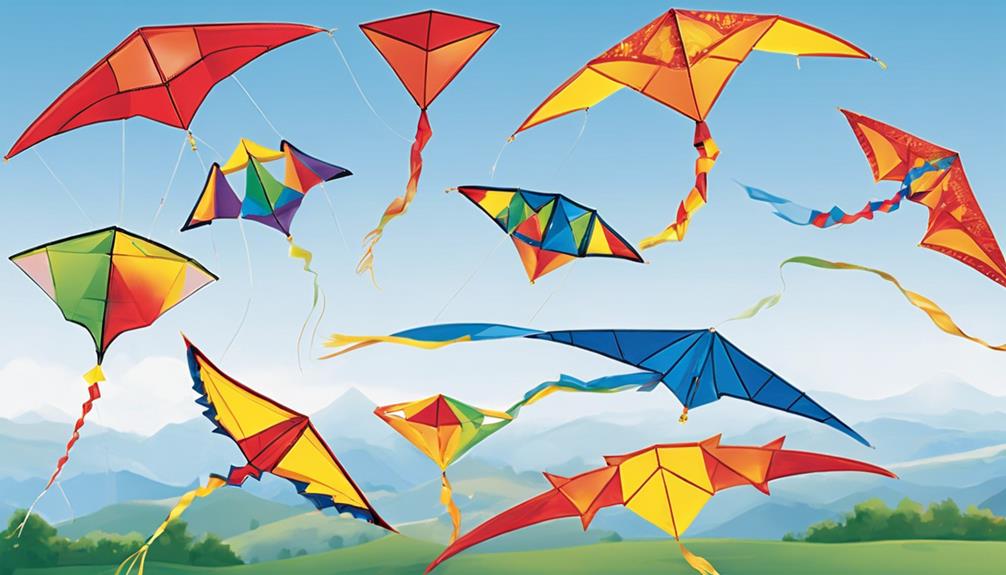
When choosing your first single-line kite, it’s essential to consider several key features that can significantly impact your flying experience. Unlike stunt kites which require more skill, single-line kites are perfect for beginners due to their easy handling.
Look for models known for their durability, such as the Widow Pro Classic Ultralight – Patriotic Star, to ensure your kite withstands various flying conditions. Easy assembly is another crucial factor, as you’ll want to spend more time flying than setting up.
The visual appeal also matters; kites like the Prism 20ft Ribbon Tail – Infrared offer stunning designs that stand out in the sky. Opting for a kite that combines these features will provide you with a rewarding and enjoyable flying experience.
Maintenance and Care Tips

To ensure your kite lasts for many seasons, it’s crucial to follow proper storage practices and routine cleaning methods.
Always store your kite in a cool, dry place and gently clean it with mild soap and water after use.
Proper Storage Practices
Storing your single-line kite properly ensures its longevity and keeps it ready for your next flying adventure. Proper storage is crucial to prevent damage and protect kites from common storage pitfalls. Here’s how you can ensure your single-line kites stay in top condition:
- Store in a dry, cool place: This prevents mold and mildew, which can deteriorate kites over time.
- Avoid prolonged sunlight exposure: To keep colors vibrant and prevent fading, keep kites out of direct sunlight when not in use.
- Properly coil and store kite lines: This step is vital to avoid tangles and damage that can make your next outing frustrating.
- Use a kite bag or case: Protect kites during storage and transportation, ensuring they’re shielded from potential harm.
Regularly inspect your kite and address any wear or damage promptly to enjoy many flying adventures.
Routine Cleaning Methods
After ensuring your single-line kite is properly stored, it’s crucial to regularly clean it to maintain its condition and performance. Kite maintenance involves gently wiping the surface with a damp cloth to remove dirt and debris. It’s important to avoid harsh chemicals or abrasive materials that could harm the kite’s fabric or design.
Regularly inspect for damage, looking for any signs of wear and tear that may need fixing. This not only keeps your kite looking great but also ensures it performs well during flying sessions. Proper storage in a dry and clean area prevents damage from environmental factors, contributing to an extended lifespan.
Best Flying Locations Revealed

Discovering the best locations for flying your single-line kite can significantly enhance your flying experience. Ideal locations such as open fields, parks, and beaches are perfect for this activity. These areas often provide:
- Ample space for maneuvering your kite without obstructions.
- Consistent moderate wind speeds for smooth and stable flying.
- Minimal risk of entanglement with power lines or trees.
- Waterfront locations, like lakeshores and seashores, offer excellent wind conditions.
When choosing a spot, it’s crucial to ensure it’s away from crowded areas to prevent accidents. Look for places with minimal obstructions and plenty of room to enjoy the thrill of kite flying safely. By selecting the right location, you’ll set yourself up for a delightful and successful flying session.
Conclusion
Wrapping up, you’ve got a solid foundation to dive into the world of single-line kites. From understanding the basics, picking a beginner-friendly model like the RC Raptor or Prism Ribbon Tail, to knowing what features to look for, you’re all set.
Remember, maintenance and choosing the right location are key to enjoyable flights. So, grab your kite, head to an open field, and let your spirits—and your kite—soar. Here’s to the beginning of your kite-flying adventures!


